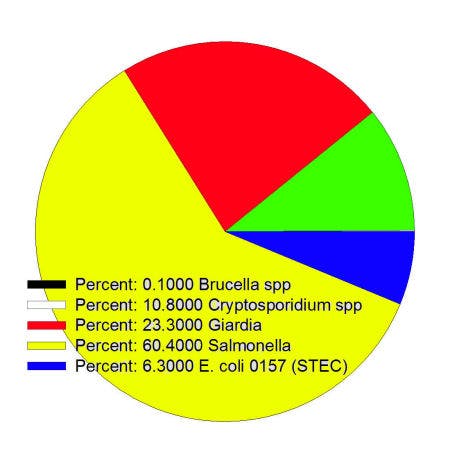Riparian Fencing
Why Should You Fence Riparian Areas?
Riparian Growth
Riparian areas are the areas between wetland and upland. The vegetation is highly nutritious and tender, making it a target for livestock. Riparian areas flourish under flash grazing, a grazing practice where livestock heavily graze for a short period of time, but do not do so great under long periods of grazing. Long periods of grazing in a riparian area cuts off the regrowth period for riparian plants and destruction of soft tissue which leads to plant death then barren ground.
By fencing off riparian areas, livestock are essentially locked mostly, if not completely, away from riparian areas. The larger the fenced area the more livestock a flash graze can withstand. Fencing off a riparian area does not mean that it can never be grazed, it just means that it cannot be grazed freely.
Riparian vegetation along waterways has a direct correlation to water quality. Riparian vegetation filters run-off, lowers water temperatures through shading, and provides habitat for wildlife. Keeping the vegetation dense along waterways is the best way to increase water quality.
Flash Grazing
Flash grazing has many benefits. For starters, the riparian vegetation is able to store more nutrition in it's stocks because of less environmental stressors, which can be directly converted to poundage by cattle, specifically feeder calves. It also helps to spread manure across a larger span of ground instead of it compiling near waterways and feed lots, it reduces the amount of fertilizer needed to replenish nutrients in crops converted to grazing pastures, and it helps to cycle nutrients by having vigorous growth by vegetation. Flash grazing works because it allows the vegetation a longer period of time to grow without pressure. Even if cattle or other livestock is removed for only two weeks, studies show that the forage grows back significantly faster and healthier. The key to flash grazing is fences. Fences dividing up larger areas require livestock to be moved more frequently, but that frequency is what gives vegetation the chance to grow. Riparian vegetation is one of the most common forage systems to respond extremely well to flash grazing.
Video Published by Chesapeake Bay Foundation, 2022
Fun Fact
The Great Plains of America and the Savannah in Africa were the first places to have flash grazing, but it was not at the hands of people. Herds in the sizes of the hundreds of thousands of bison, elk, buffalo, zebras, and other ruminants would cross the grasslands at relatively quickly speeds, mowing down the grass to nearly a nub and leaving, only to return in a few weeks to a month to do it over again. The grasses then and now were built to handle the short, intense grazing periods and flourished because of it. Today we use these natural grazing patterns to form grazing management plans.

